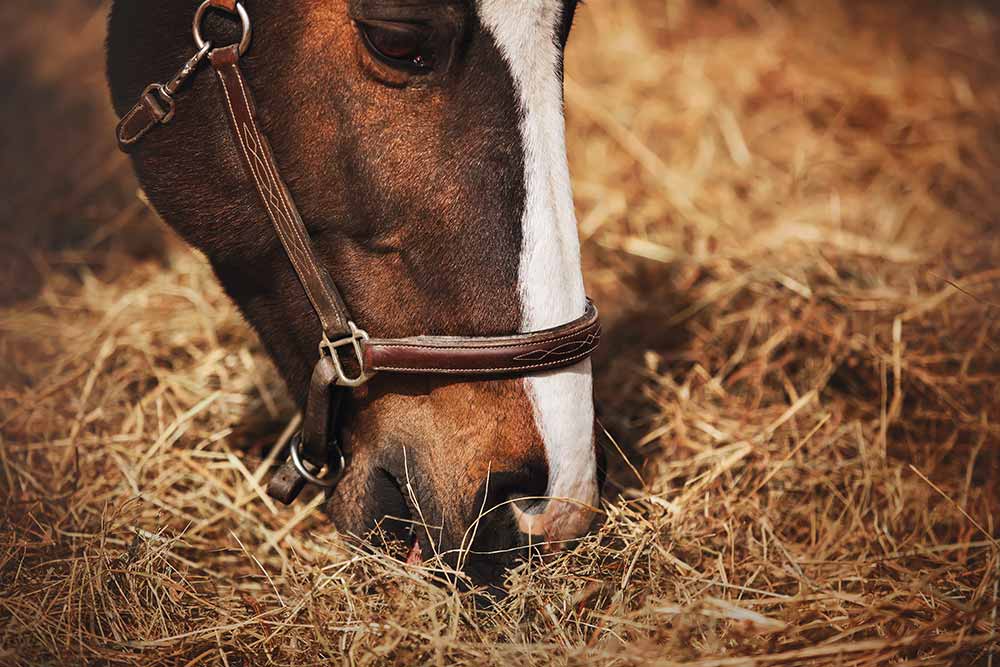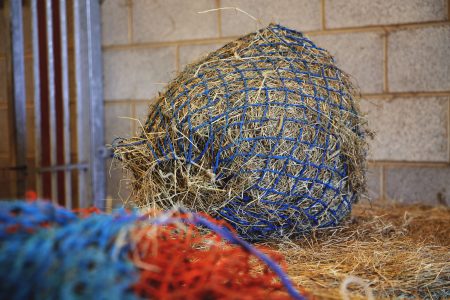Which fibre source is best for my horse?
The importance of feeding a horse fibre has become more and more recognised over the last decade as owners have become more educated. Consequently, every horse feed brand has launched a fibre product, if not a full fibre range!
How can we measure the fibre % in feeds?
In a world where there are a lot of fibre sources available for horses, it is interesting to see how they compare, but what is the best way to do this comparison? The main figure for fibre shown on the packaging of most feeds is crude fibre, however, that’s not the figure you should be looking at. Crude fibre may be high, however, crude fibre is made up by mainly insoluble fibre (not able to be digested by the horse), so you must consider the digestible energy (DE) content of the feed.
What is digestible energy?
DE is an estimate of the energy components of a feedstuff that is digested/fermented and absorbed across the gut wall. In horses, DE tends to be calculated based on nutrient analysis.
The DE of a feed is affected by components that include Lignin, Cellulose, Hemicellulose, Soluble Fibre, Fructans and fermentation:
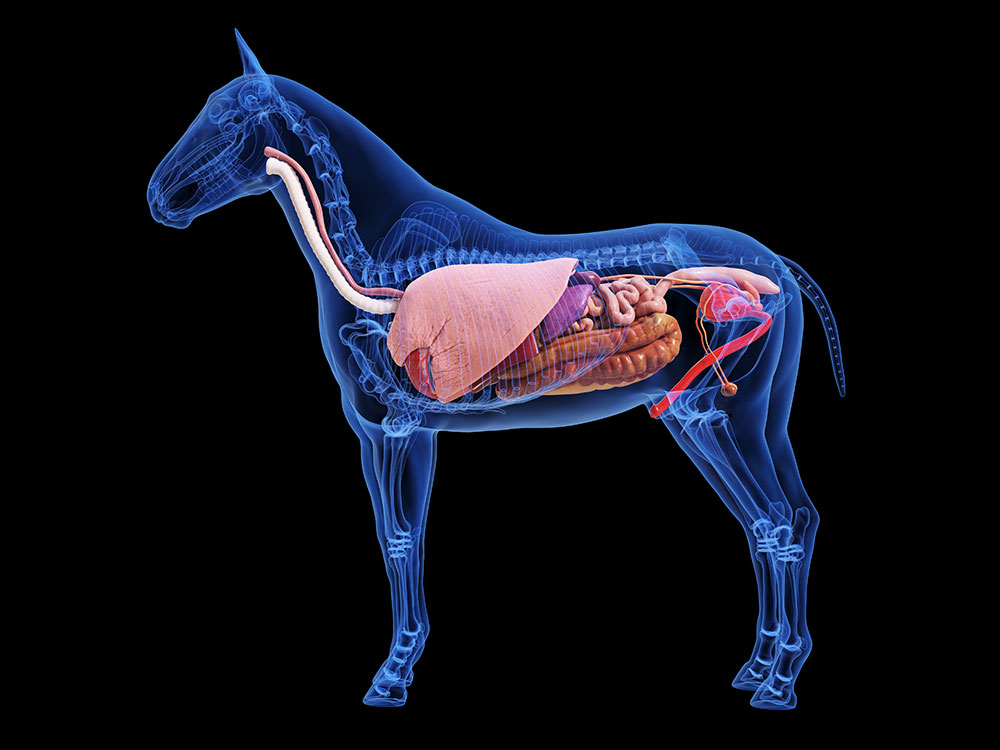
Lignin is the woody component. Unlike fibre, lignin is not degraded by bacteria/protozoa, only a few species of fungus. As such it is relatively undigestible for horses and impacts on overall digestibility. The higher the lignin content, the poorer the digestibility of fibre.
Cellulose are beta-linked chains of glucose molecules and as a result, are the “purest” of fibres. Cellulose has relatively low fermentability, therefore high levels of cellulose will reduce the DE of the fibre material.
Hemicellulose are chains of a range of sugars, their combinations impact the overall digestibility and proportion of slow-release energy. Hemicellulose has a good level of fermentability as some sugar combinations make them more accessible to bacterial enzymes.
Soluble Fibre These include pectins, functional fibres such as oligosaccharides, and soluble properties of hemicellulose. Soluble fibre has the highest fermentability, and so DE. Bacteria need to be in physical contact with their feedstuff to digest it. Being in a soluble form, all of the bacteria is in contact and so more fibre is fermented.
Fructans Although technically a fibre, these easily fermented sugars tend to be grouped under Water Soluble Carbohydrates (WSC) or sugars. Sugars tend to be broken down by microbes into short-chain fatty acids.
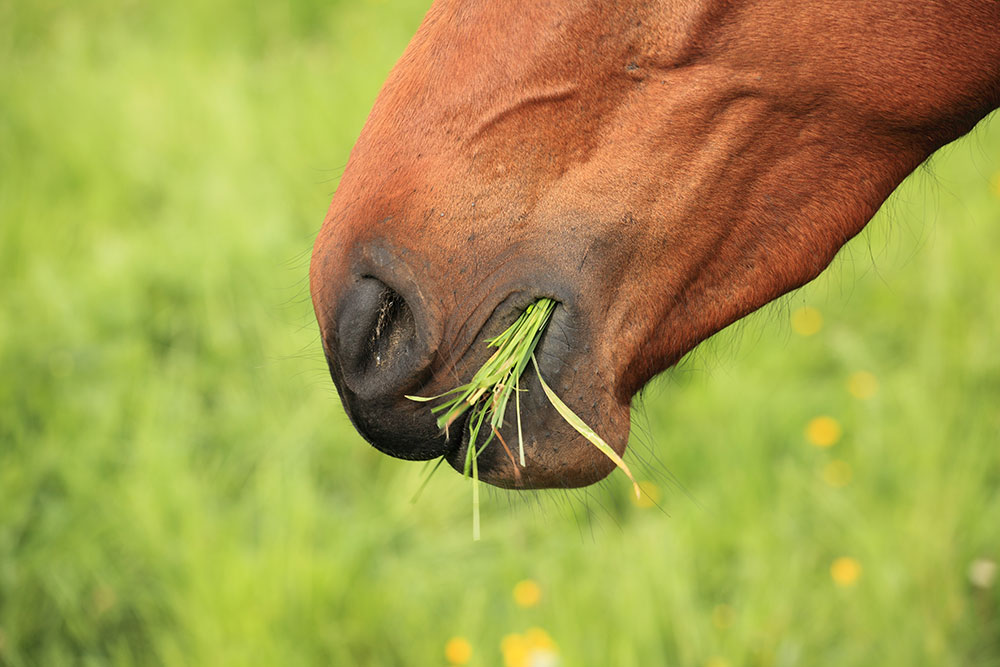
Fermentation is an integrated system. The base materials of fibre types will favour certain microbes. For example, it has been shown that pectin improves groups such as bacteroides and butyrivibrio which in turn can ferment hemicellulose. Additionally other species can break down byproducts; for example, bacteria in the small intestine can utilise lactic acid, but they are not present in the hindgut, so build-up of this acid can occur in the caecum of the horse.
So, now that we can understand components that affect DE, what does this mean for common fibre feeds that we are giving our horses?
Speedi-Beet/Fibre-Beet – research shows effective fibre breakdown and energy value with a good level of DE. Our data suggests Speedi-Beet/Fibre-Beet has at least a 10% advantage over standard beet. However, the source of beet pulp can impact hugely on quality, this is why we use a single source British grown beet pulp.
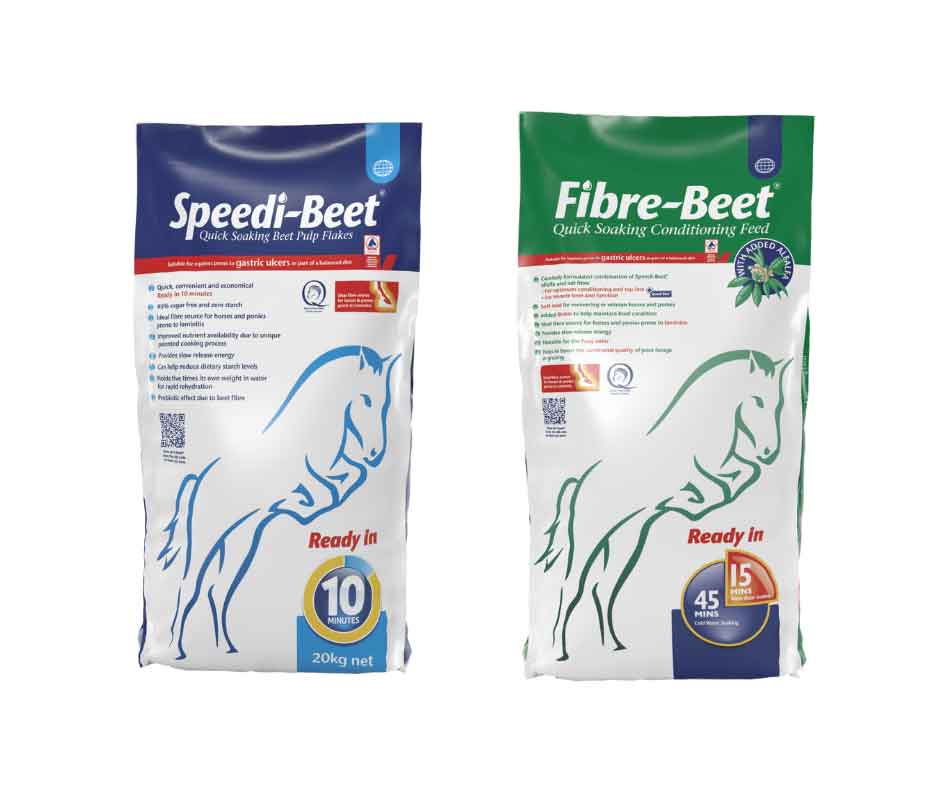
Forages – Generally, DE is relatively low in forage, although haylage is to a certain extent pre-digested. As it has little to no soluble fibre, combining it with Speedi-Beet/Fibre-Beet may give an extra boost, as pectin fermenters also help the fermentation of other fibre sources. As forages tend to be relatively low in Lignin, the potential for increased digestibility is present.
Chaff/Straw – Cereal chaff has a very high Lignin component. It can be useful for diluting forage energy, but otherwise a product with low DE due to the fibre content being Lignin. Straws again are relatively high in Lignin and low in soluble fibre, giving them a low DE.
Alfalfa – (Lucerne hay version) has an elevated lignin level, and a low soluble level which gives a mid-range DE value.
Soya Hulls – Although regarded as a super fibre, and having a very low Lignin content, this is balanced with a mid-level soluble fibre. However, a useful fibre source for improving fibre profile in a horse’s diet.
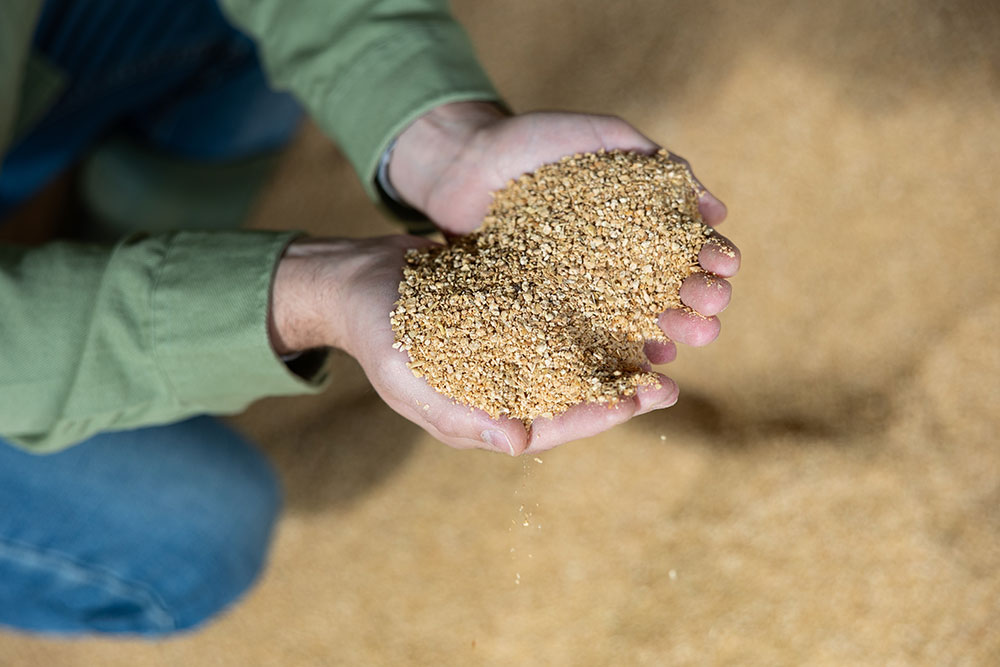
Oat Hulls & Oatfeed – Depending on the level of milling these products may have reasonable soluble levels. However, relatively high Lignin which will depress the DE. The higher levels of starch and sugars in outfeed also increase energy levels. Although a good product, it needs to be fed at reasonable levels as oat starch is particularly digestible and unlikely to reach the hind gut, so would not be suitable as a forage.
Almond Hulls As with oatfeed, a high sugar content maintains mid-range DE, despite lower fibre content and high Lignin. The presence of soluble fibre may also add to DE. Again, as with oatfeed Almond Hulls would not be suitable as a forage replacer.
Rice Hulls Low starch & sugar, high Lignin and little to no soluble fibre means poor degradability and low DE. However, due to its high fibre content it could be used as a forage/straw replacer.
Copra High protein, moderate fibre, low lignin and no soluble fibre makes a relatively high DE, due to the relatively high sugar content. However, it would not be suitable as a forage replacer.
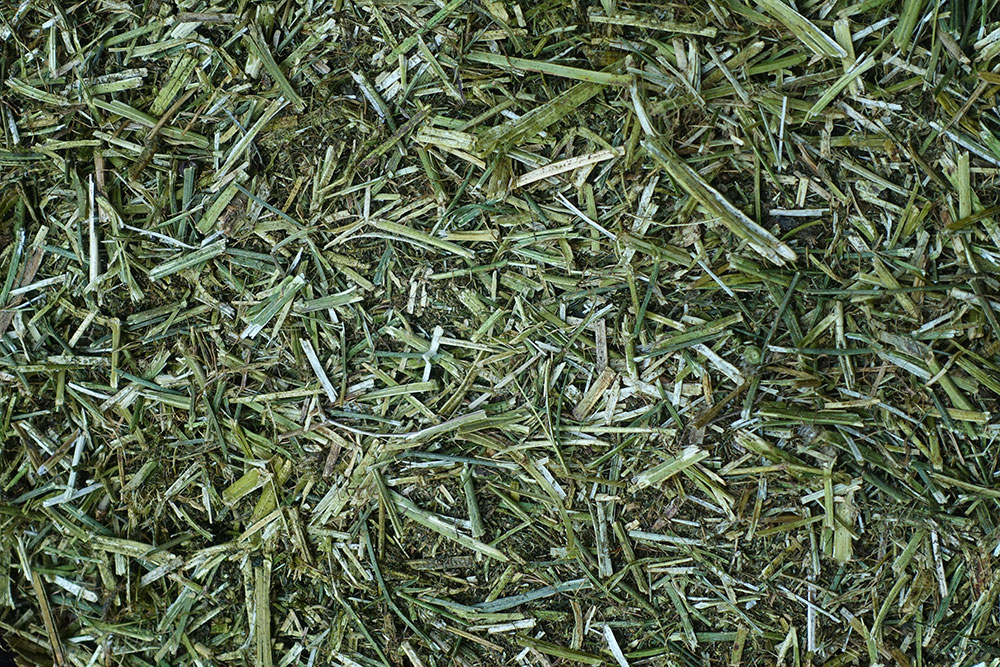
The above materials can all be considered effective horse feedstuffs but, depending on their characteristics, do not directly have the same uses as Speedi-Beet or Fibre-Beet. The data we have suggests that Speedi-Beet /Fibre-Beet helps boost the nutrient value of forage, thereby reducing the reliance on hard feed.
It certainly is not as simple as comparing the crude fibre % on the bag of feed! Remember, horses are hindgut fermenters and therefore feeding a fermentable fibre such as beet pulp will give your horse a higher fibre diet compared to other alternatives.
It has long been the philosophy of BHF that the feeding regime of forage, fibre and feed is recommended. Added fibre helps make up shortfalls in the forage and potentially reduces the need for hard feed.
TDF % Comparisons
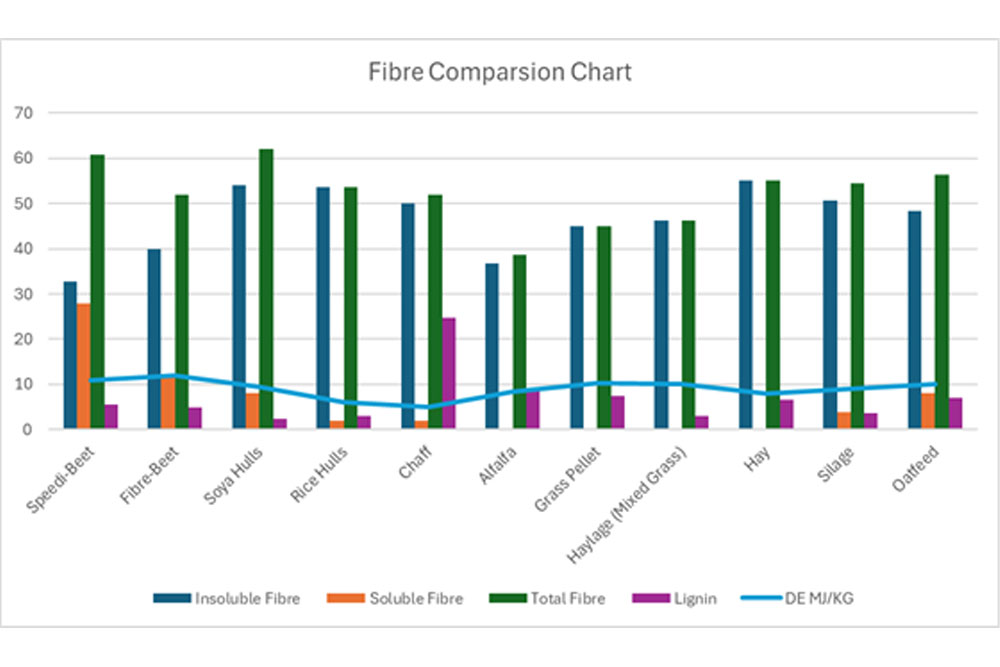
Pro duct | Speedi-Beet | Cereal Chaff | Soya Hulls | Oat Hulls | Grass Pellet | Alfalfa |
%TDF | 68 | 75 | 65 | 65 | 53 | 68 |
It is worth noting that cereal chaff shows high %TDF due to a very high cellulose content of 55%. This is compared to, for example, 32% for soya hulls or 16% for Speedi-Beet. When we add up all of the nutrients such as fibre (71% alone), protein, oil etc. there’s no space left for soluble fibre.
In conclusion, as DE is the amount of absorbable (digested) energy components, and fibre energy is released by hindgut microbial fermentation, the rate of fermentation of each fibre component is time limiting (rate of gut passage). Soluble fibre is more rapidly ferments than insoluble, and so fibre sources with high soluble components will have higher DE than those with high insoluble. There are, of course interactions with this (prebiotic effect of soluble pectin, or depressing effect of lignin) that will affect the DE of the fibre but, generally speaking, beet-based fibre feeds will have higher DE per unit of fibre than other sources.



